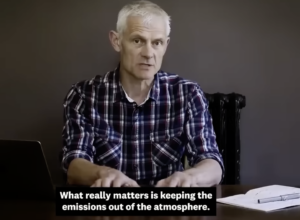June temperatures briefly passed key climate threshold. Scientists expect more such spikes | AP News

June temperatures briefly passed key climate threshold. Scientists expect more such spikes | AP News This ain’t gonna be the last time…methane and blue water and …and …and
BERLIN (AP) — Worldwide temperatures briefly exceeded a key warming threshold earlier this month, a hint of heat and its harms to come, scientists worry.
The mercury has since dipped again, but experts say the short surge marked a new global heat record for June and indicates more extremes ahead as the planet enters an El Niño phase that could last years.
Researchers at the European Union’s Copernicus Climate Change Service said Thursday that the start of June saw global surface air temperatures rise 1.5 degrees Celsius (2.7 Fahrenheit) above pre-industrial levels for the first time. That is the threshold governments said they would try to stay within at a 2015 summit in Paris.
“Just because we’ve temporarily gone over 1.5 degrees doesn’t mean we’ve breached the Paris Agreement limit,” cautioned Samantha Burgess, deputy director of the Copernicus program. For that to happen the globe needs to exceed that threshold for a much longer time period, such as a couple of decades instead of a couple of weeks.
Still, the 11 days spent at the 1.5-degree threshold shows how important it is for scientists to keep a close watch on the planet’s health, not least because previous spikes above 1.5 have all happened during winter or spring in the northern hemisphere, she said. “It’s really critical to monitor the situation, to understand what implications this has for the summer to come.”
“As a climate scientist I feel like I am watching a global train wreck in slow motion. It’s quite frustrating,” said University of Victoria’s Andrew Weaver, who wasn’t part of the measurements.
That’s because a three-year La Niña phase — which tends to dampen the effects of global warming — has given way to the opposite, an El Niño period, which could add another half-degree or more to average temperatures.
“The expectation is that 2024 will be even warmer than 2023 as this El Niño continues to develop,” said Burgess.
“We know as well the warmer the global climate is, the more likely we are to have extreme events and the more severe those extreme events may be,” she said. “So there’s a direct correlation between the degree of global warming and the frequency and intensity of extreme events.”
Stefan Rahmstorf of the Potsdam Institute for Climate Impact Research said the Copernicus data “are a reminder of how close we are to the 1.5 C global warming limit, beyond which there are major risks for humanity in terms of climate instability and ecosystem system losses.”
Rob Jackson, a Stanford University climate scientist who like Rahmstorf wasn’t involved in collecting the Copernicus data, said its significance is still unclear.
“But sometime in the next few years we will shatter global temperature records,” he said. “It’s the coming El Nino, yes. But it isn’t just El Nino. We’ve loaded the climate system. No one should be surprised when we set extended global records. 1.5 C is coming fast; it may already be here.”
___
Associated Press climate and environmental coverage receives support from several private foundations. See more about AP’s climate initiative here. The AP is solely responsible for all content.



